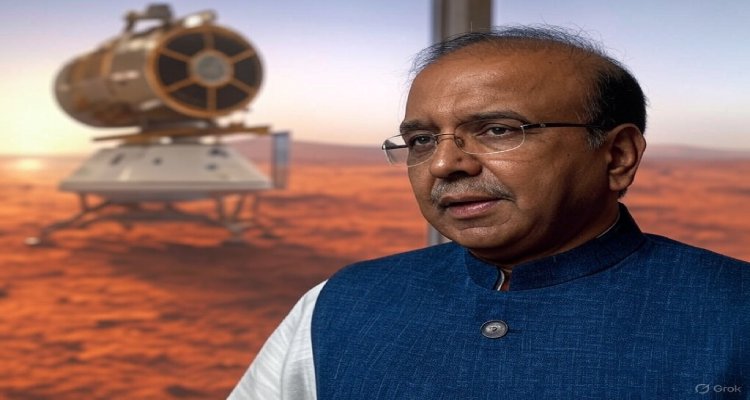India’s Mangalyaan-2 to Attempt Historic Mars Landing
ISRO’s Mangalyaan-2 is set to make India’s first Mars landing with a daring direct-entry approach and an onboard helicopter. Discover how this mission redefines India’s space ambitions.
India’s Bold Leap to Mars: Inside ISRO’s Historic Mangalyaan-2 Mission
In a bold move to expand its interplanetary footprint, India is preparing for a monumental chapter in space exploration: Mangalyaan-2. Unlike its predecessor, which orbited the Red Planet, this second Mars mission aims to accomplish what no Indian mission has before—a soft landing on Martian soil.
The Indian Space Research Organisation (ISRO) unveiled its detailed blueprint for the endeavor, revealing not only a technically ambitious roadmap but also a powerful statement of India’s deep-space aspirations. If successful, India would join an elite group of nations—namely the United States, China, and the Soviet Union—that have executed controlled landings on Mars.
From Orbit to Touchdown: How Mangalyaan-2 Will Land on Mars
The journey to Mars begins with ISRO’s heavyweight LVM3 rocket, designed to carry the nearly 4,500-kilogram spacecraft into an elliptical Earth orbit of 190 x 35,786 km. From there, the two-part spacecraft—comprising a Cruise Stage and a Descent Stage—will make its interplanetary voyage.
The Cruise Stage acts as the mission’s chauffeur through space, managing propulsion, solar power, and communications. It ensures that the spacecraft stays on course during its months-long journey to Mars. Attached to it is the Descent Stage, housing the lander that will eventually brave the Martian descent.
But unlike conventional Mars missions that settle into orbit before attempting a landing, Mangalyaan-2 takes a riskier route—a direct entry into the Martian atmosphere. This maneuver is a testament to ISRO’s rising technological sophistication and represents a significant leap in complexity from its earlier missions.
Braving Mars’ “Seven Minutes of Terror”
As the spacecraft approaches the Red Planet, the real challenge begins. Mars’ atmosphere is notoriously thin—just 1% the density of Earth’s—making controlled descent extraordinarily difficult. This phase, famously called the “seven minutes of terror” by NASA, is when the lander must autonomously execute a series of high-stakes maneuvers to slow down and touch down safely.
The sequence starts with aerobraking, using atmospheric drag to reduce speed. Next, supersonic parachutes and a heat-shielded aeroshell deploy, easing the lander through the atmosphere. Finally, at around 1.3 kilometers above ground, powered descent engines fire up to precisely steer the lander to its designated site. Every second counts—and there’s zero room for error.
A Mars Helicopter to Scout the Terrain
In a striking innovation, Mangalyaan-2 will carry a mini helicopter, drawing inspiration from NASA’s Ingenuity drone. The inclusion of this aerial scout underscores India’s ambition to go beyond traditional exploration.
The lightweight rotorcraft will conduct aerial surveys, assist in navigation, and identify promising areas for scientific research or future missions. Its bird’s-eye perspective adds a dynamic layer to India’s Martian toolkit and could dramatically increase the mission’s scientific yield.
Why Mangalyaan-2 Matters for India and the World
While an official launch date has yet to be announced, the mission plan reflects ISRO’s determination to make a meaningful leap in planetary science. Mangalyaan-2 is more than a space mission; it is a symbol of India’s evolving role as a serious player in global space exploration.
The success of Mangalyaan-1 in 2013—achieved on a shoestring budget and on the first attempt—was hailed worldwide as a marvel of cost-effective engineering. The orbiter outlived its expected six-month lifespan by over eight years, providing valuable data about Mars’ atmosphere and surface.
With Mangalyaan-2, India is no longer content to just observe Mars from afar. It aims to land, explore, and experiment, showcasing homegrown innovations that could shape the next era of space science.
A New Chapter in India’s Cosmic Journey
If Mangalyaan-2 succeeds, India will not only mark its presence on Martian soil but also in the air above it. This mission is a blend of courage, curiosity, and cutting-edge engineering—pushing the boundaries of what emerging space powers can achieve.
As ISRO continues to script this high-stakes adventure, the world watches with anticipation. And whether you’re a space enthusiast or a curious observer, one thing is clear: India’s journey to Mars is no longer a dream. It’s a destination—and Mangalyaan-2 is poised to make that landing.
Disclaimer: This article is based on publicly available data and official statements from ISRO. Mission specifics may evolve as planning progresses. Readers are encouraged to follow ISRO’s official updates for the most accurate and current information.
source : The Times of India











